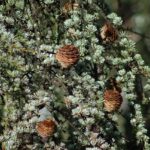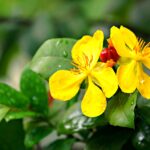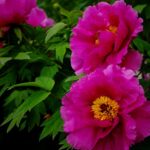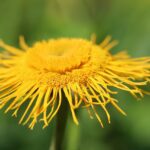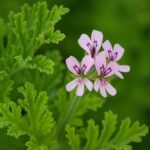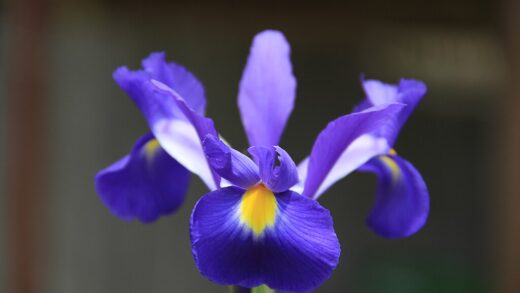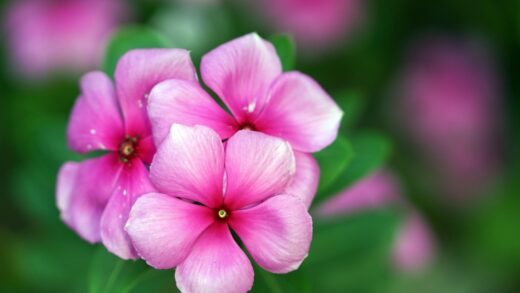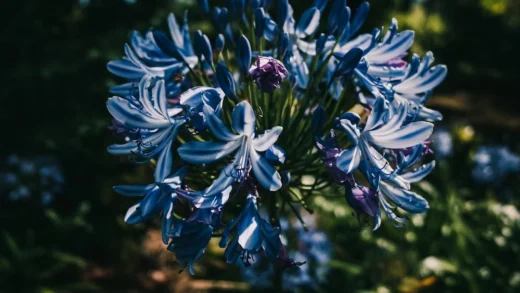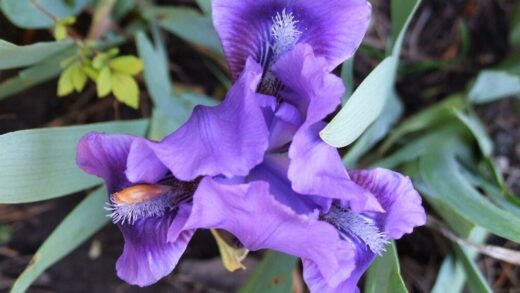Providing the right nutrients is a cornerstone of cultivating a vibrant and floriferous gardenia. These plants are known for being heavy feeders, meaning they have a significant appetite for essential minerals, especially during their active growth and blooming periods. Fertilization is not simply about feeding the plant; it is about supplying the specific building blocks it needs to develop strong roots, lush, deep-green foliage, and a profusion of fragrant flowers. A well-formulated fertilization strategy goes hand-in-hand with proper watering and light, forming the trifecta of excellent gardenia care. Understanding what to feed your gardenia, when to feed it, and how to recognize signs of deficiency is key to unlocking its full potential and ensuring its long-term health and beauty.
The unique nutritional needs of the gardenia are directly linked to its preference for acidic soil. The acidic environment affects how different nutrients are available to the plant’s roots. This is why using a generic, all-purpose fertilizer is often insufficient and can even be detrimental. Fertilizers designed specifically for acid-loving (ericaceous) plants are formulated not only with the right balance of macronutrients but also with micronutrients that are crucial for plants in low-pH soil. These specialized formulas help to maintain the acidic conditions that gardenias require to thrive and prevent common nutritional problems.
A successful feeding regimen is all about timing and consistency. The plant’s nutritional demands change throughout the year, peaking in the spring and summer when it is actively growing and setting buds. Providing a steady supply of nutrients during this time is crucial for supporting this energy-intensive process. As the plant’s growth slows in the autumn and winter, its need for fertilizer diminishes significantly. Fertilizing during this dormant period can do more harm than good, as the unused nutrients can build up in the soil and damage the sensitive root system.
Recognizing the visual cues of nutrient deficiencies is a valuable skill for any gardenia owner. The leaves of the plant often act as a diagnostic chart, indicating which specific nutrients may be lacking. The most common issue, iron chlorosis, with its characteristic yellow leaves and green veins, is a direct result of improper nutrition linked to high soil pH. By learning to interpret these signals, you can adjust your fertilization practices proactively, addressing minor issues before they become severe problems that impact the overall health and flowering capacity of the plant.
Understanding the gardenia’s nutritional needs
Gardenias, like all plants, require a range of macronutrients and micronutrients for healthy growth. The primary macronutrients are Nitrogen (N), Phosphorus (P), and Potassium (K). Nitrogen is essential for vigorous leaf growth and gives the foliage its rich, dark green color. Phosphorus plays a critical role in root development, energy transfer, and the process of flower formation. Potassium is vital for the plant’s overall health, disease resistance, and the proper functioning of its internal systems. A good gardenia fertilizer will provide a balanced ratio of these three key elements.
More articles on this topic
Beyond the macronutrients, gardenias have a significant need for several micronutrients, with iron (Fe) being the most critical. In soil with a pH above 6.5, iron becomes chemically “locked up” and unavailable for the plant to absorb, even if it is present in the soil. This is why maintaining soil acidity is inextricably linked to the plant’s nutrition. Other important micronutrients include magnesium (Mg), which is a central component of chlorophyll, and manganese (Mn), which is involved in photosynthesis. A high-quality fertilizer for acid-loving plants will be fortified with these and other essential trace elements.
The ideal fertilizer for gardenias is one that is specifically labeled for acid-loving plants, such as azaleas, rhododendrons, or camellias. These formulas are designed to be non-alkaline and often contain nitrogen in an ammoniacal form, which helps to maintain or even slightly lower the soil pH. They are also typically supplemented with chelated iron. Chelated iron is a form of iron that remains available to the plant even in slightly less-than-ideal pH conditions, making it an excellent tool for preventing or treating chlorosis.
It is important to understand that fertilization is a supplement to, not a replacement for, good soil. The foundation of plant nutrition is a healthy, organic-rich, acidic soil medium. Organic matter like compost and peat moss not only provides a slow release of nutrients as it decomposes but also improves the soil’s structure and its ability to hold onto the nutrients provided by fertilizers. A holistic approach that combines excellent soil with a regular, appropriate feeding schedule will yield the best results for your gardenia.
Choosing the right type of fertilizer
When you are at the garden center, the variety of fertilizers can be overwhelming, but for gardenias, the choice can be simplified by looking for specific keywords. Always seek out fertilizers explicitly marketed for “acid-loving,” “ericaceous,” or specific plants like “azalea & rhododendron.” These products are scientifically formulated to meet the unique requirements of plants that thrive in low-pH soils. They will provide the correct nutrient ratios and help to prevent the soil from becoming too alkaline over time, which is a common issue when using general-purpose plant foods.
More articles on this topic
Fertilizers for gardenias come in several different forms, including liquid, water-soluble powders, and slow-release granules. Liquid or water-soluble fertilizers are fast-acting, as the nutrients are immediately available to the plant’s roots upon application. This makes them an excellent choice for regular feeding during the growing season and for quickly correcting any observed nutrient deficiencies. They are typically diluted in water and applied every two to four weeks while the plant is actively growing.
Slow-release granular fertilizers offer a different approach, providing a more hands-off method of feeding. These granules are coated with a substance that breaks down slowly over time, releasing a small, steady supply of nutrients into the soil with each watering. A single application can last for several months, making it a convenient option for many gardeners. When using granular fertilizers, it is important to spread them evenly over the soil surface and gently work them into the top layer, being careful not to disturb the shallow roots of the gardenia. Always water thoroughly after application.
In addition to balanced N-P-K fertilizers, there are also specific supplements that can be beneficial for gardenias. An iron supplement, usually in the form of iron chelate or iron sulfate, can be used to treat or prevent iron chlorosis. Some gardeners also find that an occasional application of Epsom salts (magnesium sulfate) can be beneficial, as it provides magnesium and sulfur, two secondary nutrients that are important for chlorophyll production and overall plant vigor. However, these should be used judiciously and only as a supplement to a complete, balanced fertilizer.
The fertilization schedule
The timing of fertilizer application is critical and must be aligned with the gardenia’s natural growth cycle. The primary feeding season for gardenias is from early spring through late summer. This is when the plant is in its active growth phase, putting out new leaves, extending its branches, and, most importantly, forming and sustaining its flowers. During this period, a consistent supply of nutrients is essential to fuel these energy-intensive activities. The first application of fertilizer should typically occur in early spring, just as new growth begins to appear.
Throughout the spring and summer, you should adhere to a regular feeding schedule. If you are using a liquid or water-soluble fertilizer, an application every two to four weeks is a standard recommendation. It is always better to err on the side of caution and use a slightly diluted solution rather than a full-strength one to avoid the risk of fertilizer burn. If you have opted for a slow-release granular fertilizer, a single application in the spring may be sufficient to last the entire growing season, though some formulations may suggest a second application in mid-summer. Always read and follow the specific instructions on the product label.
As autumn approaches and the days become shorter and cooler, the gardenia’s growth will naturally slow down. This is the signal to begin tapering off your fertilization routine. Your last fertilizer application should generally be in the late summer or early autumn. Continuing to feed the plant into the fall can encourage a flush of tender new growth that will be highly susceptible to damage from the first frosts or cold weather. It is important for the plant to harden off and prepare for its winter rest period.
During the winter months, from late autumn until the following spring, you should cease fertilizing your gardenia altogether. The plant is in a dormant or semi-dormant state and is not actively growing, so it does not require supplemental nutrients. Fertilizing a dormant plant can lead to a harmful buildup of mineral salts in the soil, which can burn the roots and cause significant damage. The feeding schedule should only resume in the spring when you once again see the clear signs of new life and growth emerging.
Recognizing and treating deficiencies
The most common nutrient deficiency seen in gardenias is iron chlorosis. This condition presents itself with a very distinct visual cue: the newest leaves at the tips of the branches will turn a pale, washed-out yellow, but the network of veins on the leaves will remain dark green. This is a classic sign that the plant is unable to access iron, usually because the soil pH is too high. If you see this symptom, the first step is to confirm you are using an acidic fertilizer and watering with non-alkaline water. For a quick fix, you can apply a foliar spray of chelated iron directly to the leaves, which provides a temporary boost, while also applying a soil drench of iron chelate for a longer-term solution.
A nitrogen deficiency will manifest differently. In this case, the yellowing will typically start with the oldest, lower leaves on the plant and gradually progress upwards. The yellowing will be more uniform across the entire leaf, including the veins. This indicates that the plant needs more nitrogen to support its foliage growth. This can usually be corrected by ensuring you are using a balanced, acidic fertilizer at the recommended frequency during the growing season. If the problem persists, you may need to slightly increase the frequency or strength of your fertilizer application.
Magnesium deficiency can sometimes be confused with iron chlorosis, but it has a slightly different pattern. It also causes yellowing between the veins, but it typically starts on the older, lower leaves rather than the new growth. In some cases, the edges of the leaves may turn yellow or reddish in a distinct V-shape pattern. This can often be treated with an application of Epsom salts (magnesium sulfate). Dissolve one tablespoon of Epsom salts in a gallon of water and use it to water the plant. This should only be done occasionally, as a supplement to a complete fertilizer.
Preventing deficiencies is always better than treating them. The key to prevention is a consistent care routine that includes using the right type of soil, watering with appropriate water, and applying a balanced fertilizer formulated for acid-loving plants on a regular schedule during the growing season. Regularly inspecting your plant’s leaves will allow you to catch the subtle, early signs of a deficiency. This allows you to make minor adjustments to your care regimen before the problem becomes severe and affects the plant’s overall health and ability to bloom.







